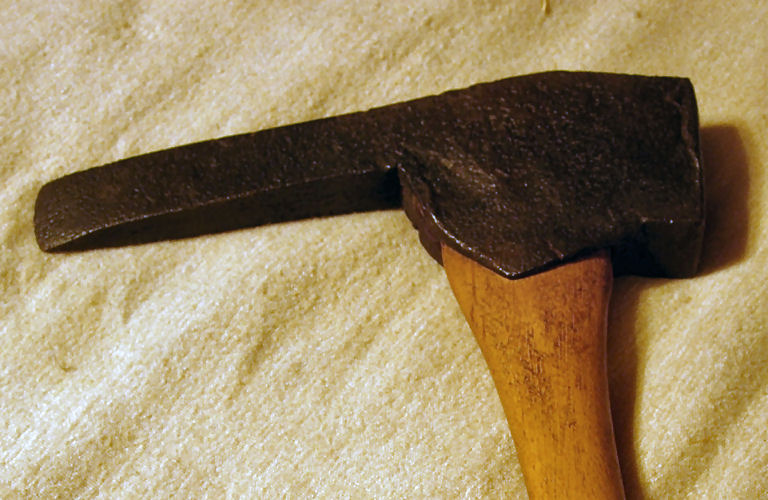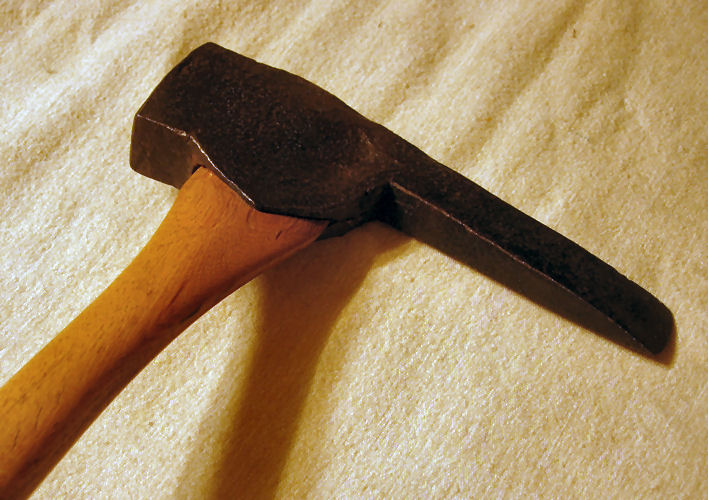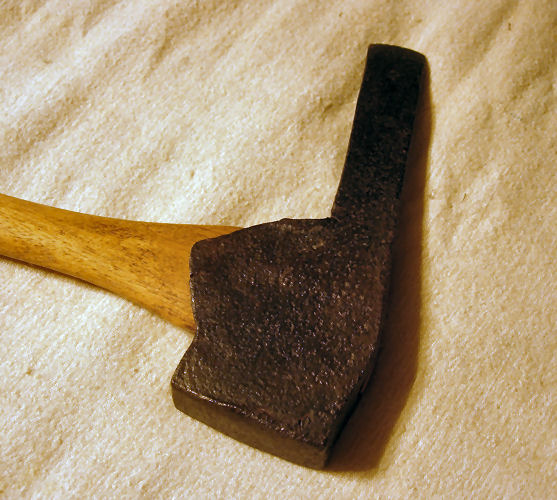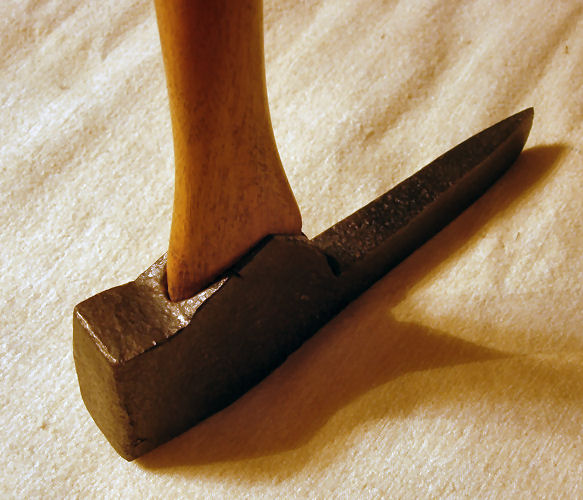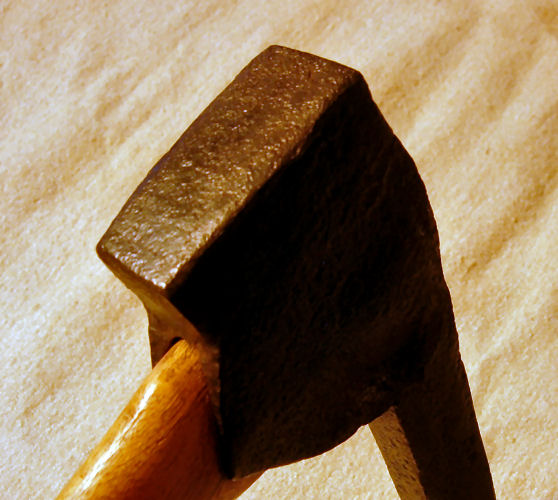

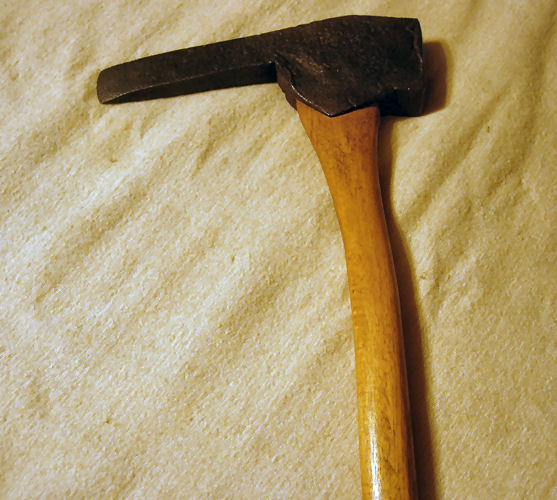
| In the Colonial Period, many things, including houses, were constructed of wood. And the individual pieces of wood that made up that thing, such as a house, needed to be joined together. The most common, strong, bond that was devised to join and hold wood together was the mortise and tenon joint. Simply explained, the mortise and tenon joint consisted of one wooden piece having a hole, or rather a cavity, in it while the other piece had a part of it protruding, or projecting, from it. The projecting part would be fitted into the cavity and the two pieces of wood would be joined together. The item exhibited here was a tool designed to chisel out the holes in wood. Those holes were given the name of mortise (variously spelled: mortice). Mortises were cut in the shape of a square. The projecting part on the piece of wood that fitted into the square hole was called the tenon. When the mortise and the tenon were fabricated along the entire length of the edges of two pieces of wood, they were known as tongue and groove. The name mortise comes from the Middle English mortays, which was derived from the Anglo-French mortoise, which meant to fasten in place. The name tenon comes from the Middle English word, tenir, which in turn was derived from an Anglo-French source. This mortise axe dates from the late 1700s to early 1800s, and like other axes of that time period, was formed by a blacksmith, hammering heated iron into the desired shape. It has a heavy poll, or head, for the purpose of being struck with a wooden mallet or other iron hammer. The cutting, or knife, edge would be placed on a log in the position of one side of the intended cavity or hole, and then the poll would be struck, forcing the tool into the wood. The mortise axe would be repositioned along one of the other four edges of the intended cavity, and struck again. The process would be repeated until all four sides of the intended cavity were cut, then the small piece of wood within the intended space of the cavity would be forced out. |
